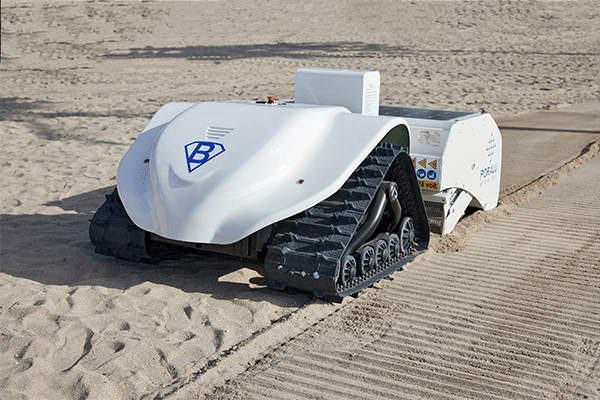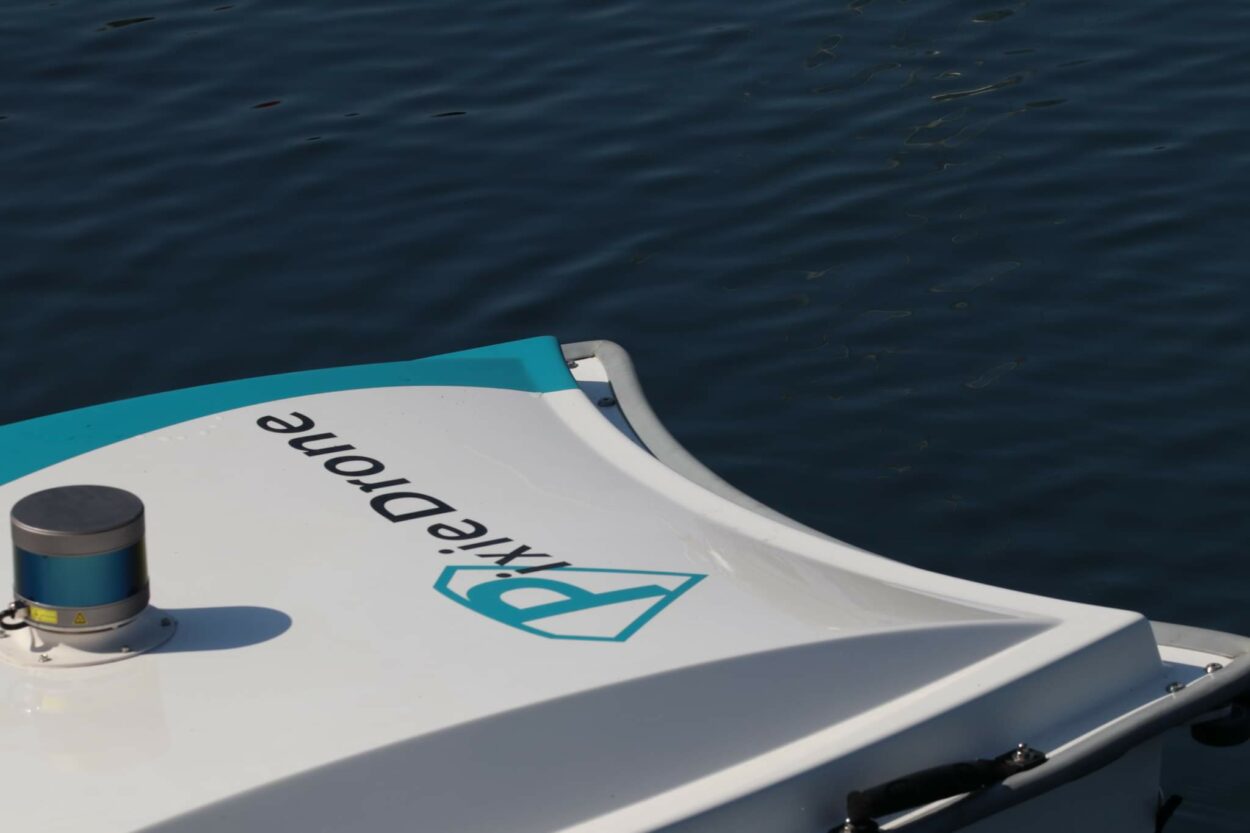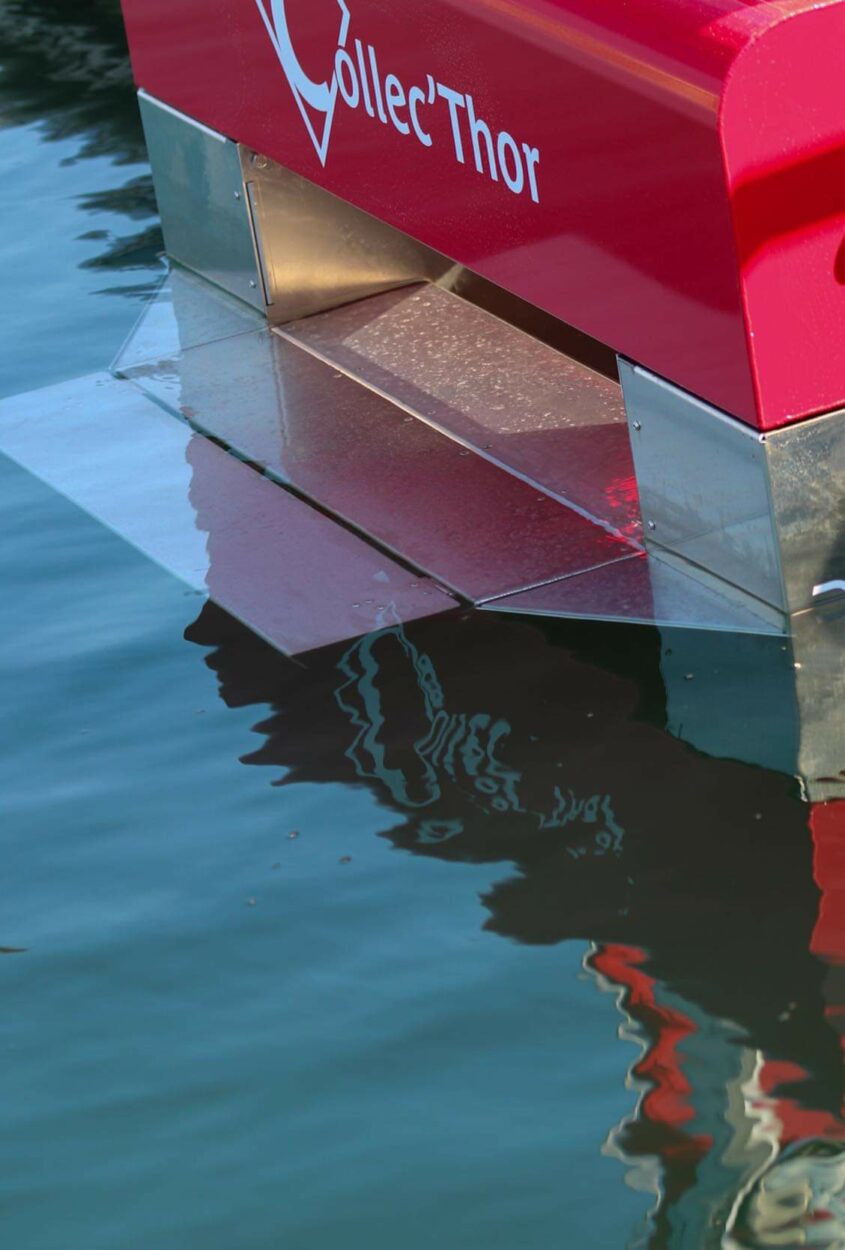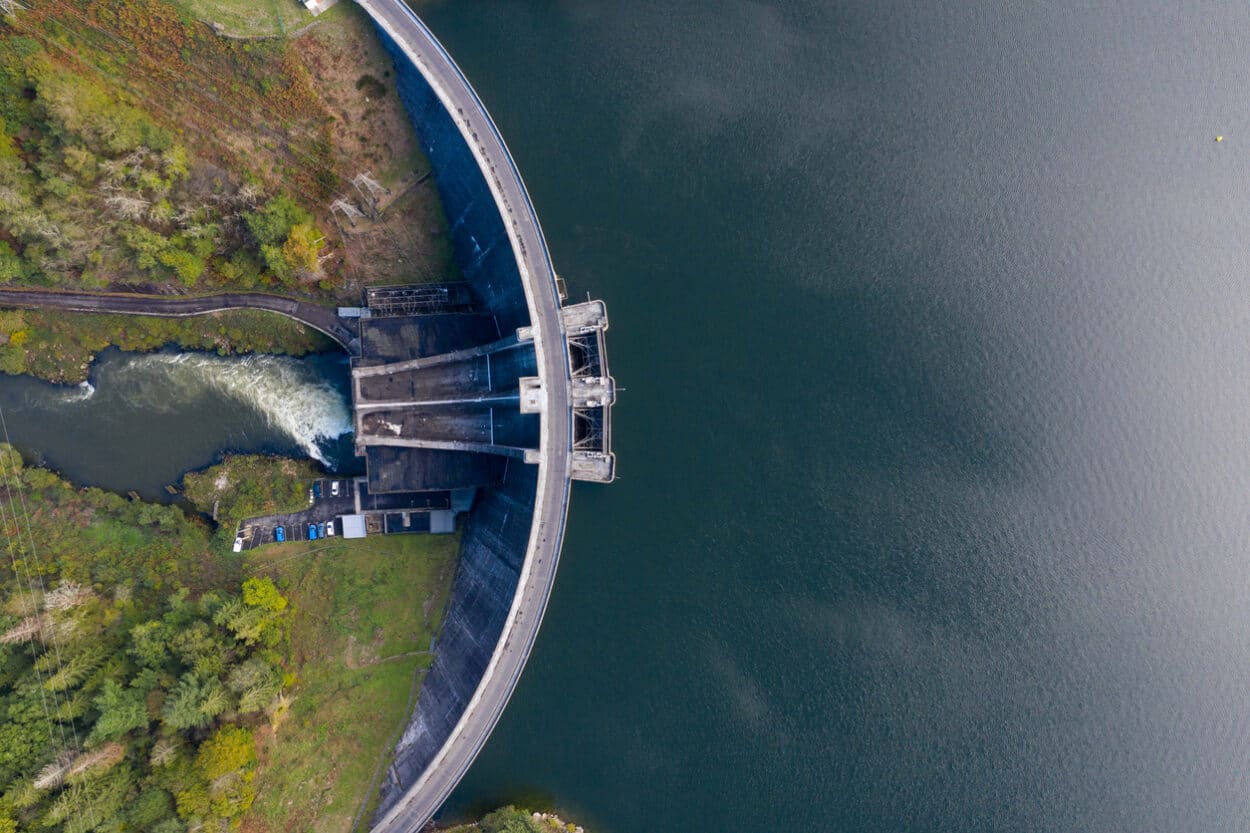The Searial Cleaners product line includes a set of 4 robotic solutions designed to clean and depollute coastlines, beaches and oceans. It was launched by French company Poralu Marine, originally specialized in the construction of marinas.
Initially developed to collect waste in harbors and marinas, this set of innovative solutions has found interest in industry in general, especially in sectors that have to manage and clean up water basins.
We went to the Port Marines de Cogolin in the south of France to see a demonstration of these solutions.
Poralu Marine is mainly known for manufacturing marinas and floating solutions.
The French company has however recently decided to commit to the preservation of the environment and launched the Searial Cleaners, a set of innovative solutions designed to collect waste on the coastline to fight against marine pollution.
The Searial Cleaners line brings together a beach cleaning robot, an aquatic drone, a waste collector and a bubble barrier.
Watch Our Video Report
Cleaning up the Coastline with Technology
90% of the waste found at sea comes from the coastline. Most of this waste consists of plastic and has dramatic consequences for the fauna and flora, as well as for the economic attractiveness of the sites.
This is, therefore, where we should be focusing our efforts, which is exactly what the solutions proposed by Poralu Marine do.
The company, with the help of various partners, has developed four different technologies, each with its own range of action and name, explains Claire Touvier, Environmental Solutions Manager at Poralu Marine,
“We know the entire coastline very well. We know that we can’t respond with a single solution because the typology of the sites is extremely varied. So we wanted to respond with a first line of 4 solutions, 4 technological innovations that allow the collection of waste on the coast, whether on land or on water. Each product is a superhero. Each superhero has its own color and identity.“
We were invited to Port Marines de Cogolin, a port in the Var region of southern France, to see a demonstration of three of these solutions. Port Marines de Cogolin is one of three pilot ports in France to test Searial Cleaners’ technology.
For Romain Rosso, Port Director,
“This environmental approach aims to preserve our coastline and make it more attractive.”
01. BeBot, the Beach Screener


The first of these innovations is BeBot, an electric beach cleaning robot. Launched in June 2021, BeBot sifts through small 1 cm waste such as cigarette butts and broken straws as well as algae.
This 600 kg robot is designed not to aggravate the erosion phenomena that often results from the use of agricultural-type machinery on the sand. Machines that are too heavy crush the sand, making it finer and therefore more easily carried away by the wind.
BeBot has another advantage: it does not disturb the fauna living at a depth of more than 10 cm, explains Claire:
“It is a technical feat, BeBot is able to target the sand without attacking it deeply. From 10 cm under the sand, it does not compact the sand anymore. This means it doesn’t damage the fauna that lives under the sand, such as turtle eggs that are buried 30 cm deep.”
This radio-controlled solution is of particular interest to seaside hotels but also to the Middle East because BeBot is capable of climbing 20° dunes on hot sand.
Its autonomy varies between 2.5 and 3.5 hours, depending on the heat and the terrain.
The company is also working on an autonomous version that will use the same technology as the PixieDrone. This version is expected to be available a year from now.
02. PixieDrone, the Sea Drone


PixieDrone is an aquatic drone designed to clean ports and marinas, as seen here at the Port Marines de Cogolin.
It is capable of swallowing up to 160 liters of organic waste and plastic floating on the surface of the water whether it is salt, fresh or brackish. It can also absorb hydrocarbons. In this case, the basket that stores the waste is equipped with fibers in the form of a pad in order to retain hydrocarbons.
Equipped with a camera with a range of 300 meters, PixieDrone can be controlled with a remote control with a screen so its movements can be followed in real time and it can be directed it to the most polluted areas.
The drone can also go into autonomous mode thanks to the presence of a LiDAR that allows it to map its environment over several tens of meters every 2 seconds. This technology allows it to detect and avoid obstacles up to 30 meters away. It has an autonomy of 6 hours.
According to Claire Touvier,
“What is interesting with the autonomous version is that it meets the challenges of a marina. You need to define strategic points. You need to define the course of the drone according to where you think there will be the most pollution. And then the drone goes into those areas and retrieves the waste.”
The waste is trapped in a basket inside the drone. Once full, the drone returns to its base where it will be emptied of waste before starting a new mission.
PixieDrone is made of fiberglass, metal and rubber. In the long term, Claire Touvier confides to us that she would like to replace the fiberglass, considered too polluting, by another more ecological material, such as jute fiber.
03. Collect’Thor: the Stationary Waste Collector

Collect’Thor is a stationary solution placed on waste accumulation points previously determined by the port or marina. This waste collector is attached to the harbor’s breakwaters and connected to the electrical current. It’s designed to operate continuously to absorb and store waste. It can hold up to 100 kg / 300 liters of waste including 3 mm microplastics.
“It’s made so you don’t have to empty it every day. It is easy to handle. It can be raised with the winch and waste can be emptied at man’s height.
There is a pump with a capacity of 32,000 liters per hour that runs continuously. The surface current created by the pump attracts the waste.
We are looking for a balance between the absorption capacity and not disturbing the ecosystem. So the suction is not too strong, the rate of progress is relatively low so as not to absorb fish for example.”
Collect’Thor is currently being tested by the Port Marines de Cogolin as part of the ambassador program launched by Poralu Marine.
The company wants to bring its technology to ports around the world to fight plastic waste pollution. Based on the feedback from the ports involved in the pilot project, the company hopes to equip a hundred ports by the end of 2022.
04. InvisiBubble: The Bubble Barrier
Searial Cleaners’ latest anti-pollution technology is a bubble barrier. InvisiBubble traps waste as small as 2 mm and confines hydrocarbons, purifying the water without disturbing boats.
Industrial Applications
If for Poralu Marine the objective is to become the gold standard for coastal anti-pollution solutions, their innovative technologies, initially developed for ports and marinas, could today be used more broadly in industry, in sectors that need to treat water. Claire Touvier explains:

“At the beginning, these technologies were meant for ports, marinas and lakes. But today we are responding to diverse players that go far beyond these sectors. We interest the hotel sector. We also interest the industrial sector.
We have been contacted by infrastructures that manage hydraulic energy basins through which waste transits. Until now, industrialists did not have a solution to manage this waste. They could only watch the waste pass through. But today we are in an era of commitment and more and more industrialists no longer want to watch the waste pass through and be released into nature. They now want to be able to intercept it. This is a first example.
A second example concerns the basins used in the food industry where several types of manufacturing are treated with water. These basins are polluted by waste carried by the wind and now they want to remove it. Again, up until now, manufacturers have had no solution except to have someone come in from time to time and clean these ponds with a landing net.“
Searial Cleaners’ solutions are available for sale through a network of distributors in several countries. Each one costs a few tens of thousands of euros.










